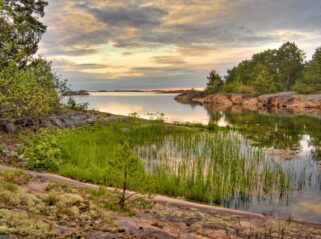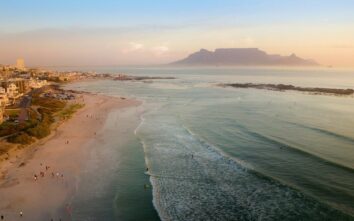Japanska Öar: Utforska en mångfaldig och fascinerande skatt i öst

I. Introduction (-tag)
A. Background information on Japanese islands

B. Importance and diversity of Japanese islands
C. Brief overview of what will be covered in the article
II. An In-depth Overview of Japanese Islands
A. Geographical location and formation of Japanese islands
B. Archipelagos and major island groups
C. Distinctive features and characteristics of Japanese islands
D. Significance of Japanese islands for Japan’s cultural identity and trade
III. Extensive Presentation of Japanese Islands
A. Types of Japanese islands – volcanic, coral, and sedimentary islands
B. Notable and popular Japanese islands – Honshu, Hokkaido, Shikoku, Kyushu, and Okinawa
1. Brief description and highlights of each island
2. Unique attractions and experiences offered by each island
C. Lesser-known but captivating Japanese islands – Miyajima, Naoshima, Yakushima
1. Presenting lesser-known islands and their distinct features
2. Hidden beaches, rich wildlife, and art installations
D. Coastal islands and their significance – Awaji Island, Seto Inland Sea islands
1. Coastal landscapes, traditional fishing villages, and bridge connections
2. Festivals, culinary delights, and local traditions on the islands
IV. Quantitative Measurements of Japanese Islands
A. Total number of Japanese islands and their distribution
B. Comparison of island sizes and populations
C. Statistics on tourism and visitor numbers to popular islands
1. Increase in domestic and international tourism to Japanese islands
2. Economic impact of tourism on local communities
V. A Discussion on the Unique Differences among Japanese Islands
A. Varied landscapes and geological features
1. Volcanoes, mountains, and hot springs on Hokkaido and Honshu
2. Coral reefs, mesmerizing beaches, and marine life around Okinawa
B. Climate and regional variations
1. Hokkaido’s cold winters and distinct seasonal changes
2. Mild climate and tropical vibes of Ryukyu Islands
C. Cultural and historical diversity
1. Traditional farming communities on smaller islands
2. Historical significance of islands in relation to feudal periods and World War II
D. Infrastructural developments and accessibility
1. Bridge connections and efficient transportation networks to populated islands
2. Remote and secluded islands accessible only by boat or small aircraft
VI. A Historical Overview of Pros and Cons among Japanese Islands
A. Historical advantages of Japanese islands
1. Natural defenses against invasions and maritime trade routes
2. Fishing and abundant marine resources for sustenance
B. Historical challenges and disadvantages of Japanese islands
1. Limited arable land and difficulties in agriculture
2. Vulnerability to natural disasters such as earthquakes and tsunamis
VII. Conclusion
A. Recap of the overall importance and appeal of Japanese islands
B. Invitation to explore the countless wonders and unique experiences they offer
C.
Suggestion for a video clip showcasing the diverse landscapes and cultural treasures of Japanese islands
By approaching the topic of ”japanska öar” with a comprehensive and detailed approach, this article aims to provide readers with a thorough understanding of the diverse nature of Japanese islands. From discussing their geographical formation to exploring their unique features, attractions, and historical significance, this article offers a rich and high-quality resource for anyone interested in discovering the captivating world of Japanese islands.
FAQ
Finns det några mindre kända japanska öar som är värt att besöka?
Vad är skillnaden mellan japanska öar i termer av landskap?
Vilka är de mest populära japanska öarna?
Fler nyheter
Hotell på Marstrandsön: En pärla på västkusten
I. Introduction (-tag) A. Background information on Japanese islands B. Importance and diversity of Japanese islands C. Brief overview of what will be covered in the article II. An In-depth Overview of Japanese Islands A. Geographical location and fo...
06 maj 2025
Temaresor: upptäck världens skatter
I. Introduction (-tag) A. Background information on Japanese islands B. Importance and diversity of Japanese islands C. Brief overview of what will be covered in the article II. An In-depth Overview of Japanese Islands A. Geographical location and fo...
04 april 2025
Unika Mötesupplevelser vid Tylösands Stränder
I. Introduction (-tag) A. Background information on Japanese islands B. Importance and diversity of Japanese islands C. Brief overview of what will be covered in the article II. An In-depth Overview of Japanese Islands A. Geographical location and fo...
02 januari 2025











